Movie Review – King Kong (1933)
Awe inspiring blockbuster monster movie, the original King Kong remains both a significant entry into the annals of cinema and a terrific film to this day. While the technology behind the film may have become obsolete, the sheer storytelling spectacle of this classic creature-feature remains as potent, and as powerful, as ever.
– Summary –
Director : Merian C Cooper & Ernest B Shoedsack
Year Of Release : 1933
Principal Cast : Fay Wray, Robert Armstrong, Bruce Cabot, Victor Wong, Frank Reicher, James Flavin.
Approx Running Time : 93 Minutes
Synopsis: An aspiring adventurer and filmmaker decides to capture a giant gorilla from a mysterious island, and return it to Broadway in New York City for the world to see. Naturally, failing to ask the giant gorilla is his biggest problem, and the enormous ape goes nuts in New York – clambering to the top of the Empire State Building with a human hostage.
What we think : Awe inspiring blockbuster monster movie, the original King Kong remains both a significant entry into the annals of cinema and a terrific film to this day. While the technology behind the film may have become obsolete, the sheer storytelling spectacle of this classic creature-feature remains as potent, and as powerful, as ever.
**********************
I don’t think it’s possible to invent a new hyperbole, is it? I’m sure that there’s somebody sitting in a dark room somewhere trying hard to think of a new way of describing a feeling without resorting to “awesome” and “amazing” and all those other variants. While I pity that poor person and their impossible task, allow me to use the relatively known exponents of positive praise to describe one of Hollywood’s – nay, world cinemas most astonishing achievements. King Kong, not to put to fine a point on it, is regarded as one of the top five or six films ever made; not only for its technical and visual style and skill, but for the simplicity and power of the story it tells, Kong was a template for cinema in the decades since it came out in 1933. Hard as it is to imagine, King Kong will hit its centenary in just over twenty years. The film came out prior to the onset of World War II, when sound on film was relatively new, color processing hadn’t been invented yet, and yet the impact of it is such that here we are, some 80 years later, still discussing this amazing, astonishing film.
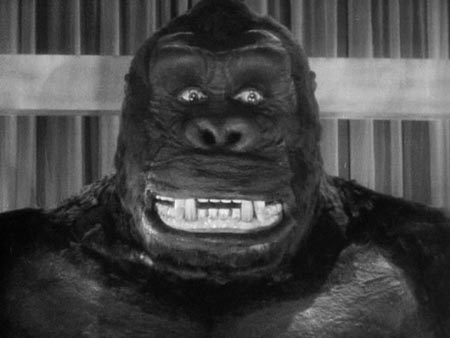
Aspiring adventurer and filmmaker Carl Denham (Robert Armstrong) is searching for a new leading lady to accompany him on a trip to the mysterious Skull Island, where it’s reputed to house a creature known as King, a giant ape living amongst a plethora of creatures long thought extinct. He “discovers” Anne Darrow (Fay Wray) amongst the lines of destitute in Depression Era New York, and, promising hefty financial gain to be had, drags her aboard his boat whereupon they set sail. After a long journey, Carl and Anne, together with the ships First Mate, Jack Driscoll (Bruce Cabot) and the crew step foot onto Skull Island to discover a lost tribe of savages guarding an enormous gate onto the rest of the island. While on the island, Denham and his team of filmmakers encounter a wide variety of monsters (including giant insects and prehistoric dinosaurs) as well as the intimidating Kong; the giant ape is offered Anne as a sacrificial morsel, although he does not kill her – instead, the ape appears to fall for the beautiful woman, developing a bond with her. Denham, seeing the chance to make a solid profit from the expedition, uses a knock-out grenade on Kong, and takes him back to New York for public display. Once back in the big city, Kong’s big unveiling goes horribly wrong: the giant ape breaks free of his bonds and escapes into the Manhattan canyons of skyscrapers, taking a terrified Anne Darrow with him to the top of the Empire State Building, then the tallest edifice in New York.
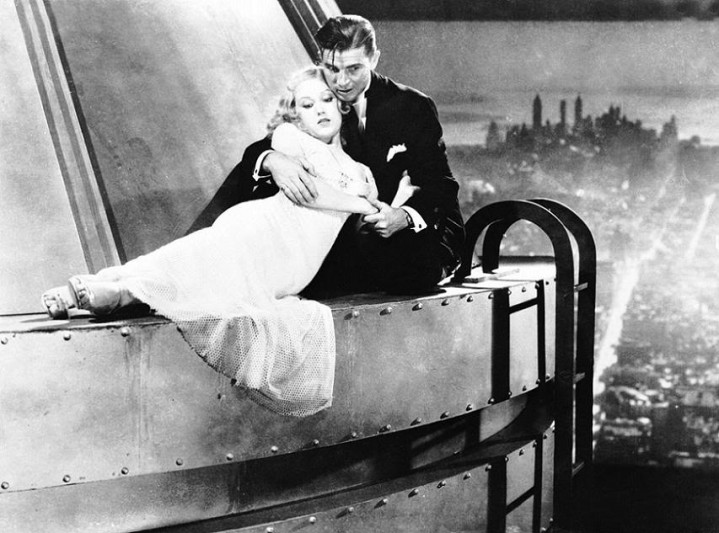
It’s become a cliche to assume that if you’re a film fan of any kind, King Kong is required viewing. Its status as one of Hollywood’s classic films is both rightly deserved, and eminently retained. The style of the film may have become a little weathered, and the vintage certainly shows, but the story and the creative genius behind it cannot be denied. Like Orson Welles would a few years later with Citizen Kane, director Merian C Cooper created in Kong a zeitgeist film, much of which contained his own personality and sense of adventure. Cooper had, for years, been fascinated by tales out of Africa, the jungles and the creatures within providing plenty of inspiration for his own documentary films – the creation of which had him put himself directly into harms way to get footage. Together with eventual screenplay polisher Ruth Rose, the wife of co-director Ernest B Shoedsack, Cooper finally had a story a studio would fund, and so production of Kong began. The core trio of characters are closely modeled on Cooper, Shoedsack and Rose – Carl Denham takes on personality traits of Cooper, Anne Darrow is partially based on Ruth Rose, and Wray’s love interest, Jack Driscoll, is loosely based on Shoedsack – it’s a nice little notion of art imitating life; Cooper was himself a keen adventurer, as was Carl Denhamm to the point where several lines of Denham’s actually stipulate events undertaken by Cooper.
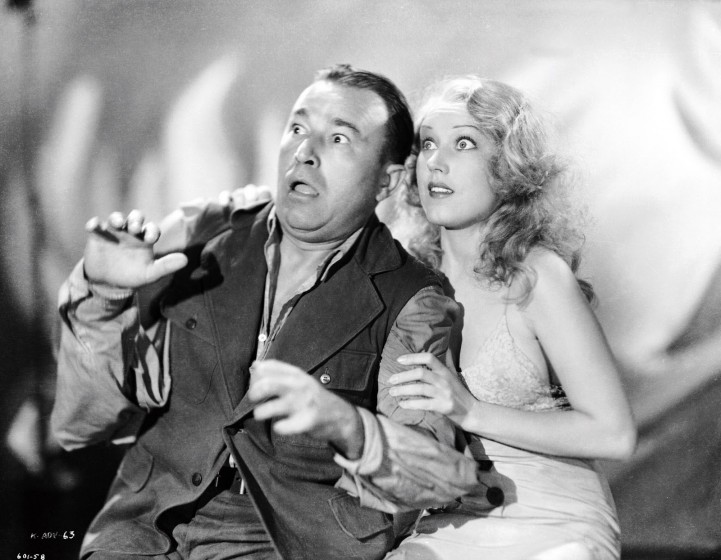
Due to it’s prominence as a major blockbuster, it’s easy to look at Kong in the cold, hard light of modern day and dismiss it as casually one might a B-grade pulp film from the same time: the effects are, by today’s standards, exceptionally clunky, and the script doesn’t have things like “intricate detail” and “development” like we get these days. What viewers should remember, though, is that King Kong was a 1930’s equivalent of today’s Roland Emmerich or Michael Bay movie – it was an effects extravaganza, and should be seen as simply that. Sure, the relationship between Anne Darrow and Jack Driscoll is as romantic as two pieces of wood clunking together, and Carl Denham’s slimy at-all-costs nature is more implied than actually presented (unlike Jack Blacks essaying of the same role in Peter Jackson’s modern remake), but there’s no denying that the effect of Kong and the creatures of Skull Island were, for their time, utterly awe inspiring. The stop motion Kong, realized by Willis O’Brian, is an utterly captivating example of early visual effects work, with Cooper and Schoedsack using every known cinematic trick in the book to get Kong into the same frame as the humans in the movie. Matte painting, rear-screen projections, photochemical blends – everything that could be used to trick the audience into believing that the giant ape was actually in the same shot as Anne Darrow.
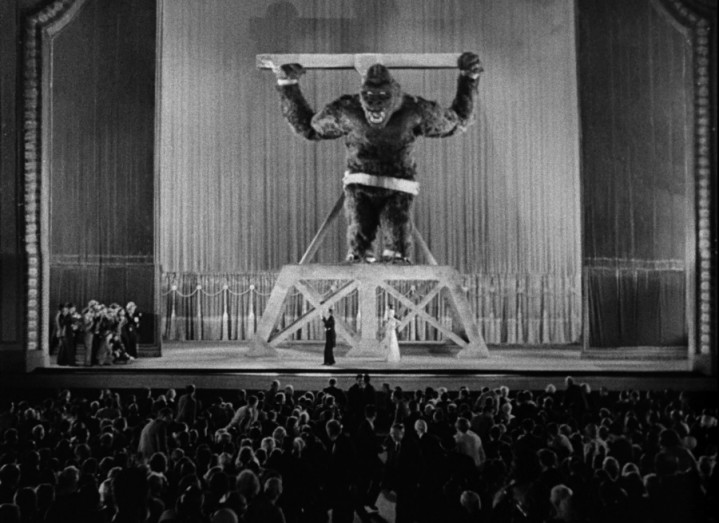
King Kong remains a beautifully shot film. Effects aside, the films visual palette, in wonderful black and white photography, is sublime. Fay Wray is gorgeously lit, almost ethereal a lot of the time, while the scenic shots of New York and Skull Island provoke a sigh of reminiscence by this reviewer for a time now since long past. Depression Era New York is one of my personal favorite time periods, and were I ever to be in possession of a TARDIS, that’s the first place I’d go. Kong’s run through Manhattan and up the side of the Empire State Building – both in actuality and in model form, looks fabulously epic, and the effects almost kinda look seamless at times, giving the film an air of authenticity. The lighting, use of shadows and grey tones, and framing of key scenes in particular (the scene with Kong and Darrow on the cliff outcrop, where Anne is rescued by Driscoll, is simply stunning) is remarkably prescient for the time, almost avant-garde at times, and as a fan of great cinematography, I was considerably impressed.
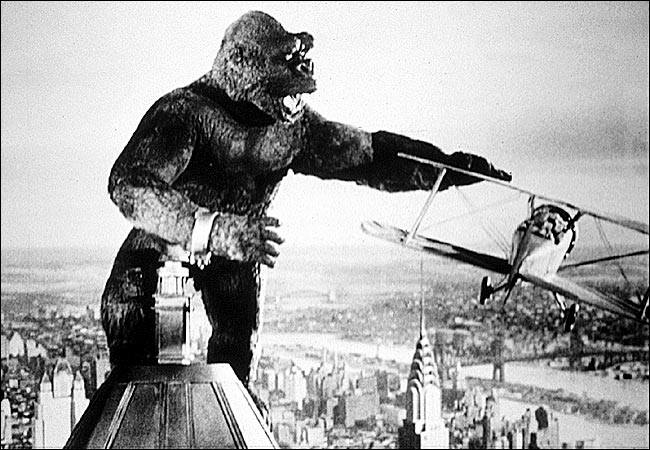
If you’re a fan of classic film – or just film in general – and you’re a regular reader of this site, it’s almost a given that you’ve either seen the film or, at the very least, have a passing knowledge of it and what it means to cinema history. From a purely modern judgmental standpoint, I’d say that King Kong perhaps hasn’t weathered the decades as well as those fond reminiscences of true fans might seem to indicate; however, contextually and in light of the historical impact the film had on the industry, there’s little doubt that the film about a giant ape not only revolutionized the way stories could be told, but vitalized the visual effects industry by an order of magnitude, and that can never be underestimated. King Kong is a terrifically visual film, one of the true early “blockbusters” and a precursor to the style-over-substance method Hollywood began to embrace in a big way in the decades that followed. It’s entertaining, spectacular and epic, and a must see for any genuine fan of film.

For more Kong, read our review of Peter Jackson’s remake here!
***

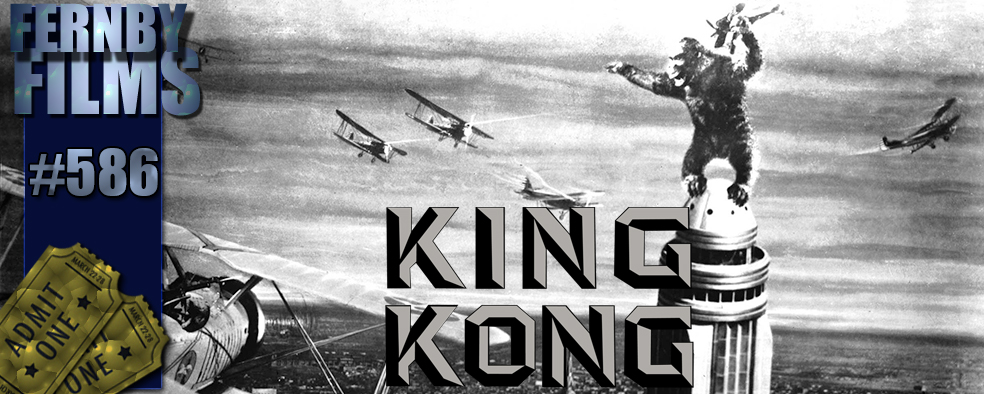


 ‘King Kong’ turns 80: Long live the Kong
‘King Kong’ turns 80: Long live the Kong
 New York City’s Empire State Building Shines Bright
New York City’s Empire State Building Shines Bright
I love this one. It is my favourite of the King Kong movies. The special effects for the time period are fantastic – they still hold up quite well today if you allow your imagination to go with it. In some ways, I prefer these effects to the more streamlined CGI we see today.
My recent post Top 10 Brits on Holiday
I agree with you, Dan. Most times, practical effects are far superior to CGI. Too bad Hollywood seems to disagree with us in its effective use.
…you can see the time, effort and skill that went into firstly creating the effect and then recording it on film. I bet audiences at the time were really wowed by it. Although CGI might be more realistic in its detail and its ability to recreate realistic movement and mannerisms, it still looks like CGI. King Kong in the 1930s looked like a puppet but at least, on set, you could reach out and physically touch it – it was there, it existed.
My recent post Top 10 Films about Prostitutes
Couldn't agree more, Dan. Audiences can tell the difference between CGI and reality, even now. Although I admit, the gap is closing….